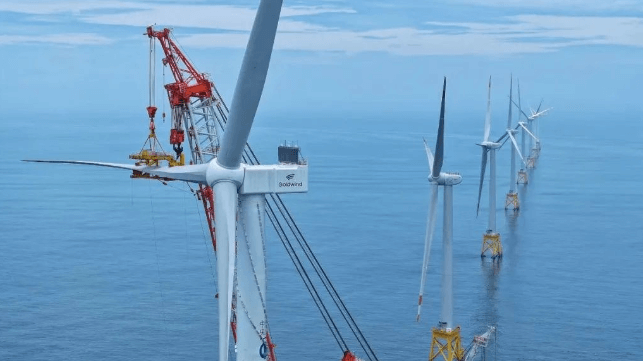Led by China's Growth, Offshore Wind Capacity Will Hit 100 GW by 2026

Despite uncertainties in the North American market, the global commissioned capacity of offshore wind is on course to surpass the 100 GW mark by mid-2026 as countries in Europe and Asia ramp up projects.
UK’s trade group RenewableUK is highlighting that with 27.3 GW of offshore wind capacity currently under construction, the world should expect to cross the 100 GW mark by the middle of next year, an indication of an industry witnessing “significant increase” despite the storm clouds of higher capex and changing trade policies. Going by the current growth rate, operational capacity could increase nearly threefold to 244 GW worldwide by the end of 2030.
The positive future growth projections follow a healthy increase in installed capacity over the past 12 months. According to RenewableUK’s latest EnergyPulse Insights Offshore Wind report, operational capacity increased by 14 percent over the period to reach 85.2 GW, up from 74.7 GW. While pacesetters like China and UK aggressively sustain investments, emerging markets like Indonesia, Chile, Guernsey, Bermuda, and Malta have contributed to an installed capacity increase over the last twelve months.
China's ring-fenced domestic market continues to dominate offshore wind with over half of all existing commissioned capacity at 42.9 GW. The UK comes second with 15.6 GW, followed by Germany with 9 GW and the Netherlands with 5.4 GW. Taiwan is now fifth with 3 GW, and Denmark is in sixth place with 2.7 GW.
While the UK has put offshore wind at the heart of its energy transition goals, the country is facing a confidence crisis with developers starting to develop cold feet on projects. Last month, Danish renewable energy giant Ørsted said it will discontinue the UK’s Hornsea 4 project citing increased costs and risks. Hornsea 4 was the company’s fourth gigawatt-scale project in the Hornsea zone with a capacity to generate 2.4 GW.
Going by Ørsted’s decision, RenewableUK is raising concerns that upcoming auctions could fail to attract interest from developers. Nearly 8.5 GW of UK offshore wind capacity, across 13 projects, is technically eligible for bidding in the next auction, Allocation Round 7, which opens this year. There are indications that developers might choose to stay away. A further 7.8 GW could become eligible if five other projects receive consent from the government before the auction, bringing the potential total to 16.3 GW.
To attract bidding, the UK government is considering relaxing the eligibility rules to allow fixed-bottom projects still in the planning system to participate in forthcoming allocation round, which if implemented could see total eligible capacity reach 25.6 GW.
For the UK, the continued rollout of offshore wind remains critical, considering the number of people working in the industry has risen from just over 32,000 two years ago to nearly 40,000 today, a 24 percent increase.
The EnergyPulse report shows that the total global portfolio of active offshore wind farms worldwide at any stage of development, from early planning to fully operational, now stands at 1,219 GW across 1,555 projects in 46 countries. China maintains leadership with 261 GW under development followed by the UK with 94.4 GW and the U.S with 77.8 GW.
“It’s great to see this significant increase in operational offshore wind capacity worldwide, as well as the healthy pipeline of future projects with new countries entering the market every year,” said Jane Cooper, RenewableUK’s Deputy Chief Executive.
In the case of the UK, and considering the upcoming auction round, Cooper is urging the government to put the right framework in place to maximize interest by ruling out zonal pricing, something that has the potential to deter investors and jeopardize the country’s targets of reaching 45 GW to 50 GW of offshore wind by 2030.
